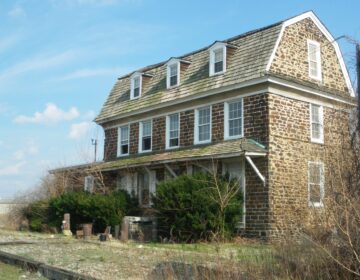Mixed reviews for report from Sandy rebuilding task force
In the weeks since the federal Hurricane Sandy Rebuilding Task Force released its 200-page report filled with 69 recommendations to guide the recovery, environmental and planning advocacy groups throughout the state have been poring over the findings.
Generally, they’re pleased with what they’ve read. They’re also unsure of how, or even if, all the recommendations will be implemented and what the impact on New Jersey will be.
The Task Force was created by President Barack Obama last December to help ensure that the $50 billion of emergency aid is well-spent, and to come up with guidelines to safeguard the nation against climate change. It included representatives of nearly two dozen federal departments and agencies, as well as contributions from state and local officials.
The group’s recommendations include hardening the power grid, developing mortgage policies to help homeowners struggling as a result of the storm, and addressing the affordability challenges presented by recent changes to the National Flood Insurance Program and the adoption of the new FEMA flood maps.
Both the study’s authors and watchdog groups say they hope the recommendations will be fully implemented so New Jersey — and the nation — will be better prepared for future storms. But Gov. Chris Christie has in the past expressed opposition to some of the policy recommendations. While he’s now publicly pledging his support, his office has not responded to repeated requests for more detailed reaction to the task force’s findings. In the months ahead, all eyes will be watching to see how things play out in the Garden State.
Speaking at a press conference in Little Ferry with Department of Housing and Urban Development Secretary Shaun Donovan, the day after the report was released, the governor said New Jersey has learned from all the storms it’s experienced over the past few years. “Our response to Irene was good, our response to Sandy was better, and our response to whatever comes next will be better if we prepare the right way to make sure that we have a plan that is really seamless,” he said.
Part of that plan, according to the report, must involve the various levels of government taking a more regional approach to the recovery. “Natural disasters do not respect State or local boundaries, thus rebuilding plans cannot be bound by jurisdictional lines,” it states. “A series of uncoordinated hazard mitigation measures may yield unintended consequences and could ultimately decrease resilience in the long-term. Major rebuilding decisions made by community leaders should not be considered in isolation.”
But Christie has previously been opposed to regional efforts, including the creation of a Coastal Commission, which he feels could detract from the “uniqueness” of individual shore communities.
“We don’t need new government, more government. No, that won’t happen under me,” he told the “Asbury Park Press” last January. The regional planning route has always been a tough sell in New Jersey, where the tradition of home rule reigns supreme and many individual towns are fiercely protective of their way of doing things. To help circumvent this opposition, recommendation eight on the task force’s list involves establishing a Sandy Regional Infrastructure Permitting and Review Team, consisting of representatives of nearly a dozen federal agencies. As the storm recovery continues, the group will provide oversight for the reconstruction of “infrastructure projects of national or regional significance” — particularly ones that require reviews from multiple jurisdictions or are particularly costly — to ensure that they’re built to comply with best practice standards.
According to the Executive Order that created the steering committee, much of its focus will be on “sectors including surface transportation, aviation, ports and waterways, water resource projects, renewable energy generation, electricity transmission, broadband [and] pipelines.” The task force has also created the New Jersey Local Resilience Partnerships to support cross-jurisdictional collaboration in parts of the state facing similar risks and challenges. Drawing on the resources of several private-sector planning organizations, as well as the New Jersey Recovery Fund (from which NJ Spotlight has also received funding), towns participating in the voluntary partnerships will be offered planning and implementation expertise, with a focus on sustainability, mitigation, and collaboration with neighboring municipalities. Municipalities participating in the program so far include Highlands and Sea Bright. They’ll retain local control and have the ultimate say over any land-use decisions that come out of the process.
WHYY is your source for fact-based, in-depth journalism and information. As a nonprofit organization, we rely on financial support from readers like you. Please give today.
















